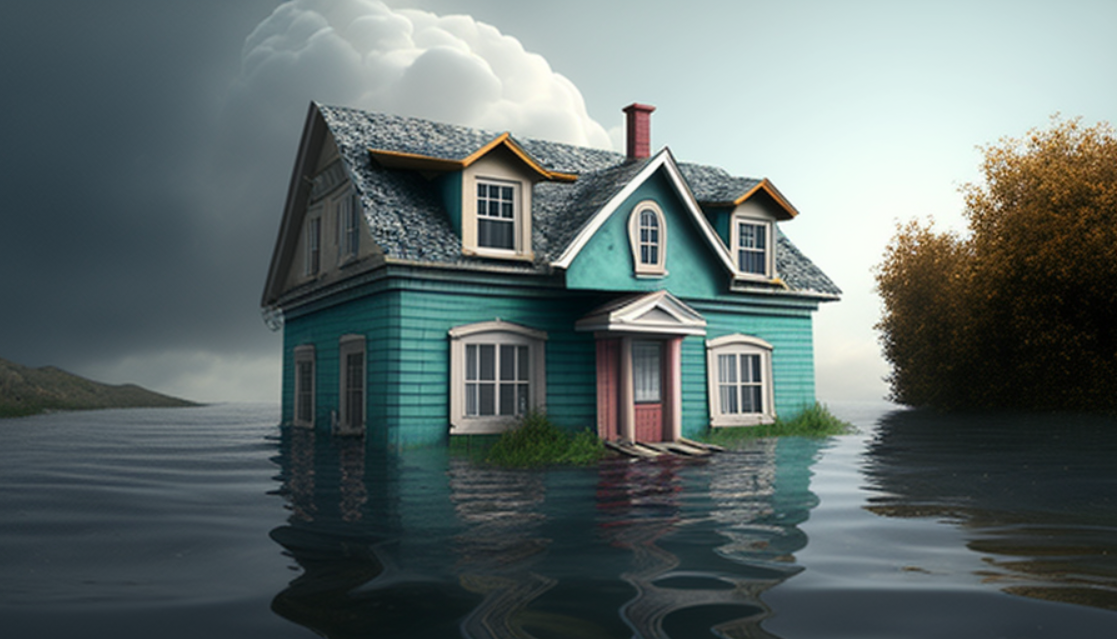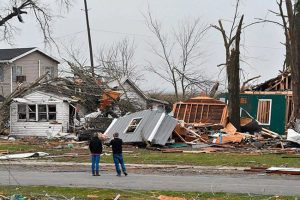Experiencing a burst pipe or significant water damage in your home not only disrupts your daily life but also thrusts you into the complex and often unfamiliar territory of damage control and insurance claims. The immediate aftermath of such an event is fraught with stress, confusion, and a sense of urgency to mitigate the damage and restore normalcy as swiftly as possible. Understanding the essential steps to take immediately following such an incident is crucial in preventing further damage, safeguarding your home’s structural integrity, and ensuring your family’s well-being.
The chaos that ensues after discovering water damage can leave many homeowners at a loss for where to begin. The emotional toll of witnessing your home in disarray, coupled with the potential loss of personal belongings, can be overwhelming. However, it is during these critical first moments that taking the right actions can significantly impact the recovery process, both in terms of physical repairs and financial compensation.
In this guide, we aim to equip homeowners with a structured approach to navigating the aftermath of water damage, emphasizing the importance of swift, informed decisions. From the initial discovery of a burst pipe to the complex process of filing an insurance claim, each step is designed to empower homeowners, offering clarity and control in a situation that can often feel chaotic and unpredictable.
Our comprehensive introduction to handling a burst pipe or water damage not only outlines practical steps but also delves into the strategic importance of each action, including why shutting off the water supply immediately is critical, the benefits of documenting the damage thoroughly, the role of a public adjuster in advocating for your interests, and the significance of timely communication with your insurance company. Moreover, we discuss the preliminary cleanup efforts that can prevent further damage and prepare your property for professional assessment and restoration.
Embarking on the path to recovery after water damage requires a blend of immediate action, cautious assessment, and strategic planning. With the right guidance and support, homeowners can navigate this challenging situation with confidence, ensuring a comprehensive and fair resolution to their claims, and ultimately, the restoration of their home to its pre-damage state.
Table of contents
1. Turn Off the Water Supply
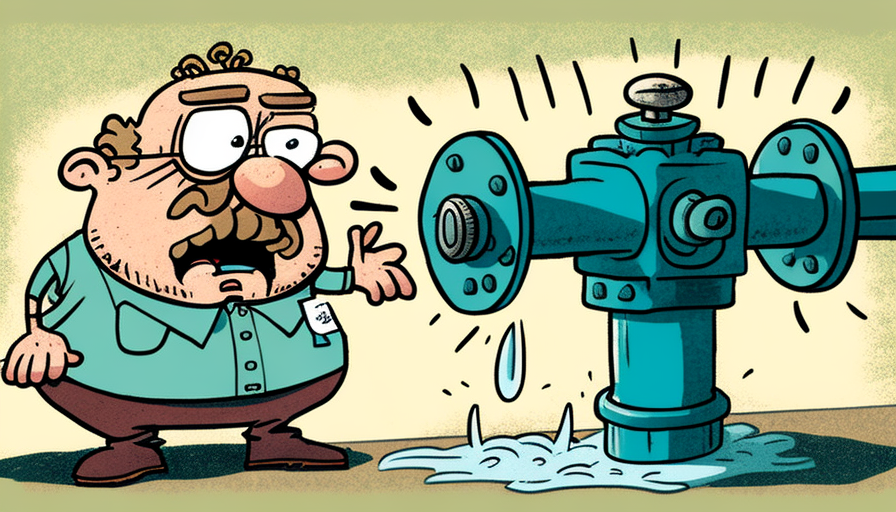
Turn Off the Water Supply
When faced with a burst pipe or water damage in your home, the immediate and unequivocal first step is to halt the influx of water by turning off the water supply. This decisive action is foundational in mitigating further damage and minimizing the impact on your property. However, the task of locating and shutting off the main water valve can vary significantly depending on the layout of your home, the installation specifics of your plumbing system, and even regional construction standards. Here, we delve into the nuances of this critical first step, offering insights into how to navigate this process under various circumstances.
Identifying the Location of the Water Shutoff Valve
The main water shutoff valve is the control point for the water entering your home. Its location can differ markedly:
- Inside the Home: Commonly, in colder climates where freezing is a concern, the main water valve is located inside the home to prevent freezing. It’s often found in the basement, utility area, or along an exterior wall. In apartments or condos, it might be in a utility closet or near the water heater.
- Outside Near the Street: In milder climates, the shutoff valve may be outside, typically near the property line or directly adjacent to the street. It might be buried in a box flush with the ground or under a cover marked “water meter” to protect it from the elements.
- Special Considerations: Some homes, especially older ones or those in rural areas, might have their main water valve located in a well house or an external pump room.
Operating the Valve
Once located, turning off the water supply should be straightforward, but there are instances where it may require specific tools or knowledge:
- Standard Valves: Many valves can be turned off by hand, requiring a simple turn in the clockwise direction (righty-tighty) to halt the water flow.
- Gate Valves: These might require more force to turn and, if not operated for a long time, could be stiff or difficult to move.
- Special Tools: In some cases, especially with valves located near the street, a water meter key or a special wrench might be necessary to access and turn the valve. These tools are readily available at hardware stores but having one in advance is advisable.
- Professional Assistance: If the valve is inoperable, inaccessible, or you’re unable to locate it, contacting your water utility company or a professional plumber is a prudent next step. Some situations, particularly those involving valves that require special tools or are located in difficult-to-reach areas, necessitate professional intervention to prevent causing further damage.
Additional Considerations
- Familiarize in Advance: Knowing the location of your main water shutoff valve before an emergency strikes can save valuable time and prevent extensive damage. It’s a good practice to familiarize yourself and your household members with its location and operation.
- Regular Maintenance: Periodically check the valve to ensure it’s operational. A non-functioning shutoff valve during an emergency can significantly complicate the situation.
- Labeling: Clearly label the shutoff valve to avoid confusion, especially if you have multiple valves for different water sources.
Turning off the water supply promptly in the event of a burst pipe or significant water damage is crucial in controlling the situation and minimizing damage to your home. Understanding the specifics of your home’s water shutoff system ensures that when the need arises, you’re prepared to act swiftly and effectively.
2. Ensure Safety and Assess the Damage
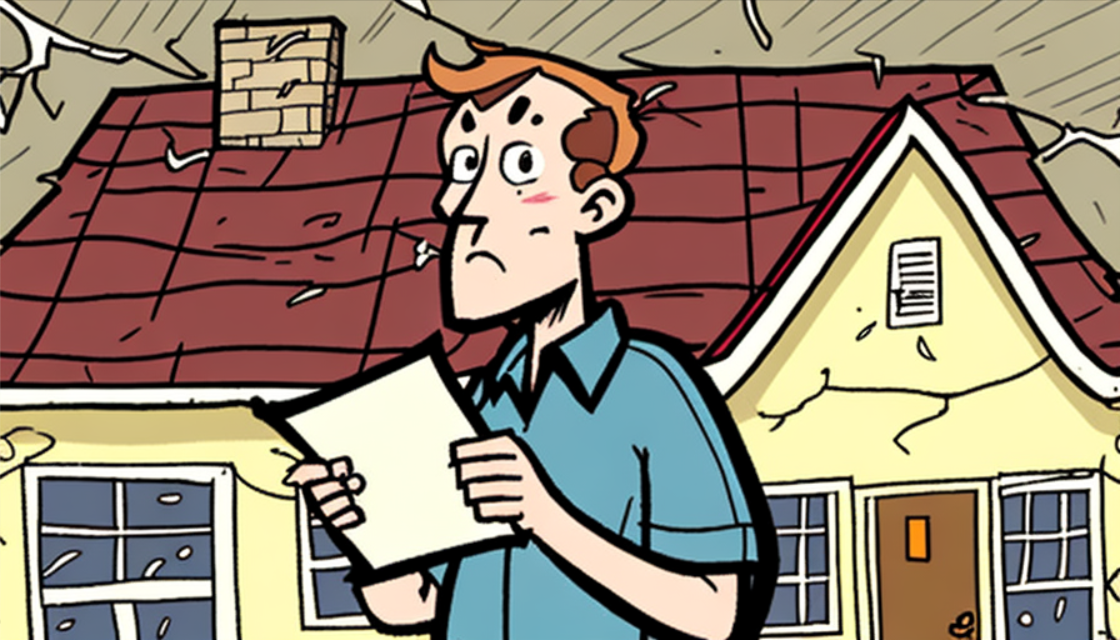
Ensure Safety and Assess the Damage
After successfully turning off the water supply to mitigate further damage from a burst pipe or water incident, the next critical steps are ensuring safety and assessing the damage. This phase is vital for protecting yourself and others from potential hazards and for laying the groundwork for a successful insurance claim and restoration process. Here, we delve into the best practices for safely navigating and evaluating the aftermath of water damage in your home.
Ensuring Safety
Before entering any areas affected by water damage, prioritize safety to prevent accidents and injuries:
- Electrical Hazards: Water and electricity create a highly dangerous combination. Before entering the damaged area, ensure the power is turned off at the circuit breaker. If you cannot safely access the breaker or have doubts about electrical safety, consult a professional electrician.
- Structural Integrity: Water damage can compromise the structural integrity of floors, ceilings, and walls. Be cautious of sagging ceilings, weakened floors, and other structural damages that may pose risks. If in doubt, wait for a professional assessment before entering affected areas.
- Contaminated Water: Consider the possibility of contaminated water, especially if the damage is related to sewage backups or floodwaters. Such water can contain harmful bacteria and chemicals. Wear protective clothing, including gloves and boots, and avoid contact with the water if contamination is suspected.
- Gas Leaks: If you smell gas or suspect a leak, leave the area immediately and contact your gas company or a professional. Do not use electrical switches, phones, or anything that could generate a spark.
Assessing the Damage
Once it’s safe to do so, carefully assess the extent of the water damage. This assessment will be crucial for your insurance claim and for planning the restoration process:
- Documentation: Take detailed photos or videos of all affected areas and damaged property. This visual evidence is critical for your insurance claim and can help in the recovery process. Document the damage from multiple angles and include close-ups of damaged items.
- Inventory Damaged Items: Make a comprehensive list of damaged property, including descriptions, estimated value, and, if possible, purchase dates and receipts. This inventory will support your insurance claim and help ensure fair compensation.
- Initial Damage Assessment: Note the extent of the water penetration, including how far up the walls the water reached, which areas and items are affected, and any immediate signs of mold or mildew. This information will be valuable for restoration efforts.
- Safety Hazards: While assessing the damage, continue to be mindful of potential safety hazards, such as exposed nails, broken glass, and sharp edges.
Professional Consultation
Consider consulting with a public adjuster or a water damage restoration professional to accurately assess the damage and begin the claims process. These experts can provide valuable insights into the extent of the damage, necessary repairs, and the steps needed to ensure a comprehensive recovery.
Ensuring safety and thoroughly assessing the damage after a burst pipe or water incident are pivotal steps in managing the situation effectively. By taking these actions, homeowners can protect themselves from immediate hazards and lay a solid foundation for the recovery and insurance claims process, ultimately facilitating a smoother restoration of their property.
3. Contact a Public Adjuster

Contact a Public Adjuster
Once you’ve ensured safety and assessed the water damage in your home, the next critical step is to contact a public adjuster. This move is often overlooked by homeowners in the immediate aftermath of water damage, but it can significantly influence the outcome of your insurance claim and the overall recovery process. Public adjusters are licensed professionals who work exclusively for policyholders, not insurance companies, to manage the claims process, negotiate on your behalf, and ensure you receive the maximum compensation allowed under your policy.
Why Contact a Public Adjuster?
- Expert Advocacy: Public adjusters serve as your advocates in dealing with insurance companies. They have an in-depth understanding of insurance policies and the claims process, which they use to represent your interests.
- Maximize Your Settlement: Their expertise in accurately documenting losses and assessing damage can help ensure your claim covers the full extent of the damage, potentially leading to a higher settlement than you might secure on your own.
- Save Time and Reduce Stress: Navigating the insurance claims process can be time-consuming and overwhelming. A public adjuster handles the legwork, from documenting damages to negotiating with the insurance company, allowing you to focus on your recovery.
- Expertise in Damage Assessment: Public adjusters have the experience to identify and document both obvious and hidden damages that you may overlook. This comprehensive approach ensures that all related damages are included in your claim.
When to Contact a Public Adjuster
Ideally, you should reach out to a public adjuster as soon as possible after assessing the damage. Early involvement allows them to start the process promptly, ensuring no details are overlooked and that your claim is filed within any time constraints set by your insurance policy.
How to Select a Public Adjuster
- Check Credentials: Ensure the public adjuster is licensed to practice in your state and has a good standing with the state’s insurance department.
- Experience and Specialization: Look for adjusters with experience in handling water damage claims, as they will be more familiar with the nuances of such cases.
- References and Reviews: Ask for references from past clients and check online reviews to gauge their reliability, effectiveness, and customer service quality.
- Fees: Understand their fee structure, which is typically a percentage of the claim settlement. Ensure the terms are clear and acceptable before proceeding.
The Role of Public Adjusters in the Claims Process
Upon hiring, a public adjuster will conduct a thorough review of your insurance policy to understand coverage limits and exclusions. They will then compile a detailed estimate of the damages, submit the claim on your behalf, and handle all communications with your insurance company. Throughout the process, they will advocate for your best interests, aiming to secure a fair and just settlement.
Involving a public adjuster in your water damage claim can significantly ease the claims process, providing you with expert guidance and representation. This professional support not only aims to secure the best possible outcome for your claim but also allows you to navigate the aftermath of water damage with greater confidence and peace of mind.
4. Notify Your Insurance Company
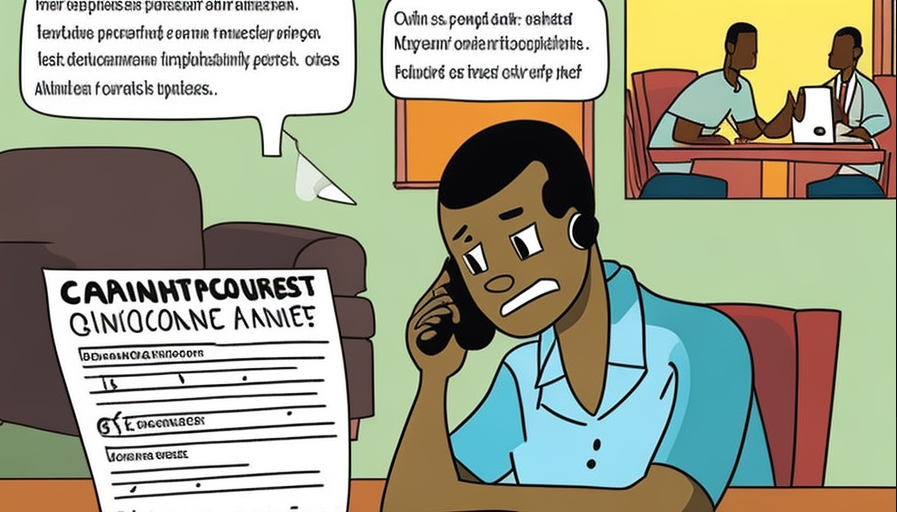
Notify Your Insurance Company
After ensuring safety, assessing the damage, and consulting with a public adjuster, the next essential step in managing water damage is to notify your insurance company about the incident. Prompt communication with your insurer is crucial for a smooth claims process and to ensure you receive the coverage you’re entitled to under your policy. This step sets the official claims process in motion and is critical for securing financial assistance for repairs and recovery.
How to Notify Your Insurance Company
- Immediate Notification: Contact your insurance company as soon as possible after the incident. Many insurers have a 24-hour hotline for claims reporting. Delaying notification can complicate the claims process and potentially affect the outcome of your claim.
- Policy Information: Have your policy number and other relevant information on hand when you call. This will facilitate the initial reporting process and help the insurance company quickly locate your account and policy details.
- Detailed Account: Provide a clear and concise description of what happened, the extent of the damage (as far as you can tell), and any emergency measures you’ve taken (like turning off the water supply and starting the cleanup). Avoid speculating about the cause or extent of the damage; stick to the facts as you know them.
- Documentation: Mention that you have documented the damage with photos or videos and have begun compiling a list of damaged or lost items. This will be important for the adjuster assigned to your claim.
- Ask Questions: Inquire about the next steps in the claims process, including the timeframe for sending an adjuster to your home, what documents you will need to provide, and if there are any immediate actions you should take. Also, ask about your policy’s coverage limits, deductibles, and any specific clauses that might affect your claim for water damage.
What to Expect After Notifying Your Insurance Company
- Claims Adjuster Assignment: Your insurance company will assign a claims adjuster to handle your case. This person will be your main point of contact with the insurer throughout the claims process. They will review the damage, assess the claim, and negotiate the settlement.
- Inspection and Assessment: The insurance adjuster will likely schedule a visit to inspect the damage firsthand. This is where the documentation and initial assessment you’ve conducted will be invaluable. Your public adjuster can also be present during this inspection to ensure your interests are represented.
- Claim Processing: After the inspection, the insurance adjuster will process your claim based on the policy coverage, the adjuster’s assessment, and the documentation you’ve provided. This process can take time, depending on the complexity of the claim and the volume of claims the insurer is handling (which can be significant after widespread events like storms or floods).
Key Considerations
- Communication: Keep a detailed record of all communications with your insurance company, including dates, the names of people you spoke with, and the content of your discussions. This record can be crucial in case of disputes or delays in the claims process.
- Understand Your Policy: Familiarize yourself with the specific terms and conditions of your insurance policy. Knowing your coverage limits, deductibles, and any exclusions will help you understand the scope of your coverage and set realistic expectations for the claim outcome.
Notifying your insurance company promptly and effectively after water damage sets the stage for a successful claims process. By providing accurate information, documenting the damage, and asking the right questions, you can navigate this crucial step with confidence, ensuring you’re well-prepared for the next phases of your claim and recovery.
5. Begin the Cleanup Process
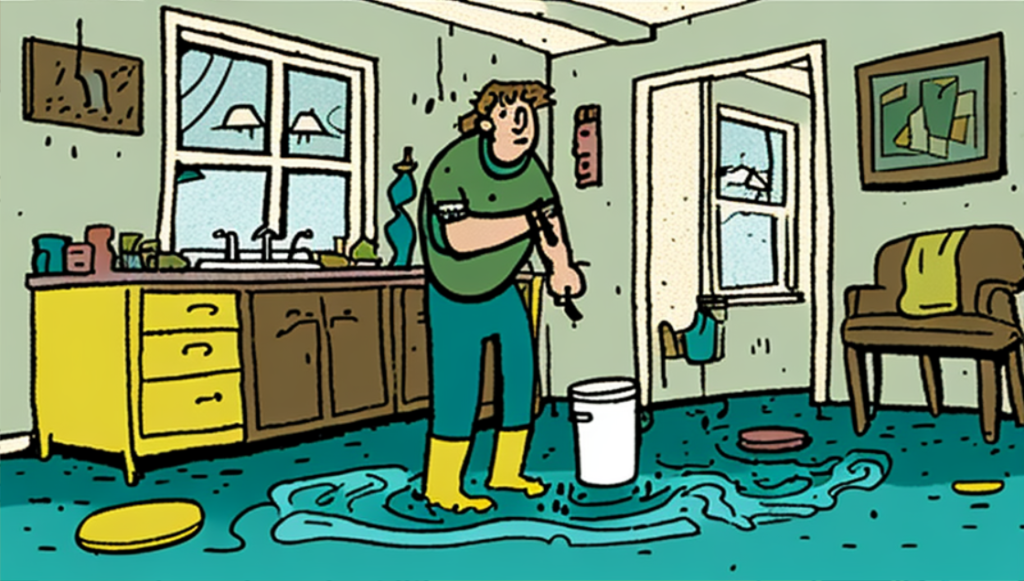
Begin the Cleanup Process
Once you’ve taken the crucial steps of ensuring safety, assessing the damage, contacting a public adjuster, and notifying your insurance company, beginning the cleanup process is the next essential action to mitigate further damage and prepare for the restoration of your home. Starting cleanup efforts promptly can prevent the growth of mold, further water damage to structures and belongings, and can help in the quicker recovery of your living space. However, it’s important to proceed with caution and follow specific guidelines to ensure the cleanup is effective and safe.
Safety First
Before you start the cleanup process, ensure that it’s safe to do so. Wear protective gear, including gloves, masks, and waterproof boots, to protect against contaminants in the water, especially if it’s from a source like sewage backup or floodwaters, which may carry harmful bacteria and chemicals.
Remove Standing Water
- Use Pumps or Wet Vacs: If there’s a significant amount of water, using a sump pump or a wet-dry vacuum can be effective in removing standing water. For smaller amounts, mopping and blotting can work.
- Dispose of Water Properly: Ensure that the water is disposed of in a manner that doesn’t cause problems to your home or the local drainage system.
Dry Out the Affected Area
- Increase Ventilation: Open windows and doors to allow air circulation, weather permitting.
- Use Fans and Dehumidifiers: Fans can help move air around the wet areas, while dehumidifiers can significantly reduce moisture levels in the air, helping to dry out materials faster.
- Remove Wet Items: Take out rugs, furniture, and other movable items to a place where they can dry out more effectively.
Clean and Disinfect
- Disinfect Surfaces: After drying, clean and disinfect all surfaces affected by water damage. This step is crucial to prevent mold and mildew growth and to remove contaminants.
- Salvageable Items: Carefully clean and disinfect items that can be salvaged. It might be necessary to professionally clean certain items like upholstery or draperies.
Prevent Mold Growth
- Act Quickly: Mold can start to grow within 24 to 48 hours after water exposure. Removing moisture quickly is key to preventing its growth.
- Inspect for Mold: Keep an eye out for signs of mold in the following days and weeks, especially in hidden areas like behind walls or under flooring.
Professional Help
Depending on the extent of the water damage, it might be beneficial to hire professional water damage restoration services. Professionals have the expertise, equipment, and techniques to thoroughly clean and restore your home more effectively than DIY methods.
Coordinate with Your Public Adjuster
- Keep Records: Document the cleanup process with photos and notes. This information can be important for your insurance claim.
- Stay Informed: Your public adjuster can provide guidance on what cleanup costs may be covered by your insurance and how to document them properly.
Beginning the cleanup process after water damage is a critical step towards restoring your home. By following these guidelines, you can ensure a safer and more effective cleanup, setting the stage for the necessary repairs and recovery. Remember, the goal is not only to clean up but also to prevent further damage and prepare for the successful restoration of your property.
Closing

Closing
Navigating the aftermath of water damage in your home demands prompt action, informed decisions, and a strategic approach to recovery. From the initial steps of turning off the water supply and ensuring safety, to the complexities of assessing the damage, contacting a public adjuster, notifying your insurance company, and embarking on the cleanup process, each phase plays a pivotal role in mitigating further damage and paving the way for a comprehensive restoration.
The journey from the shock of initial discovery to the relief of restoration is fraught with challenges, yet armed with the right knowledge and resources, homeowners can navigate this path with confidence. The role of a public adjuster stands out as a beacon of support, offering expertise and advocacy that can significantly influence the outcome of your insurance claim, ensuring that you receive the compensation you deserve. Their guidance becomes indispensable in translating the intricacies of your policy into actionable, informed decisions that protect your interests.
As you embark on the cleanup and restoration process, remember that this journey, though daunting, is a temporary phase towards reclaiming your sanctuary. The emphasis on safety, detailed documentation, and professional assistance not only aids in a smoother recovery but also fortifies your resilience against potential complications. By adopting a proactive stance and leveraging expert support, you can turn the tide on water damage, transforming a moment of crisis into a testament to your resilience and determination.
In closing, the experience of dealing with water damage, while challenging, offers valuable insights into the importance of preparation, the strength of advocacy, and the power of perseverance. By following the outlined steps and enlisting the right support, homeowners can navigate the aftermath of water damage not just with the aim of restoration, but with the vision of emerging stronger, more informed, and ready to safeguard their homes against future risks. The path to recovery is a journey of renewal, resilience, and restoration—a process that, with the right approach and support, leads back to the comfort and security of your restored home.
FAQ
Immediately turn off the water supply, ensure safety, document the damage, contact a public adjuster, and notify your insurance company.
Locate the main water shutoff valve, which can be inside or outside your home, and turn it clockwise to stop the water flow.
Documenting damage with photos and videos supports your insurance claim, providing evidence of the extent and impact of the damage.
A public adjuster advocates on your behalf, ensuring you receive the maximum compensation by accurately documenting losses and negotiating with your insurance company.
Notify your insurance company as soon as possible after the incident to start the claims process and receive guidance on next steps.
Wear protective gear, be cautious of electrical and structural hazards, and consider water contamination risks.
Securing your property prevents further damage, protects against theft, and is often required to fulfill insurance policy obligations.
Look for licensed professionals with experience in water damage claims, check references and reviews, and understand their fee structure.

